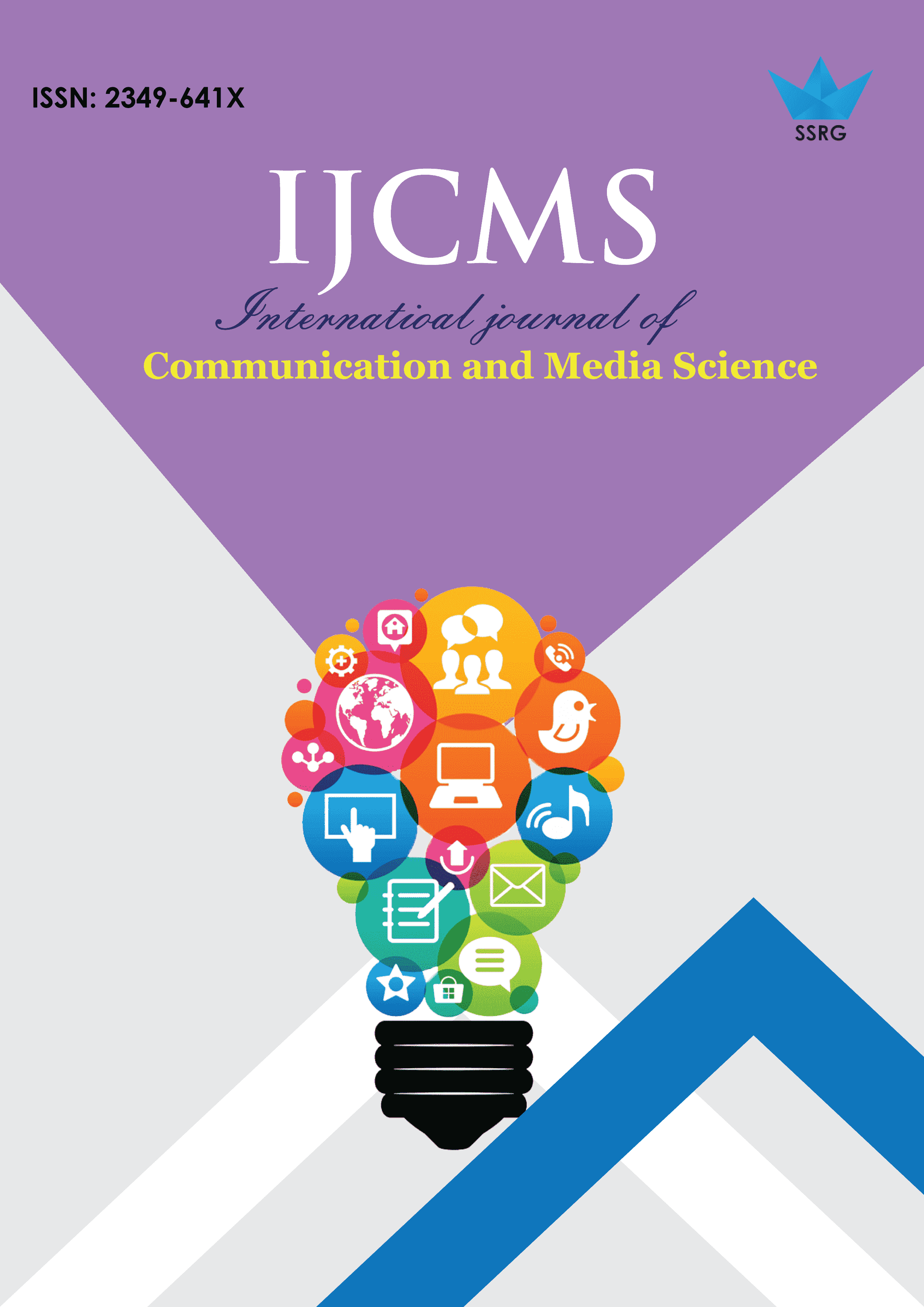Exploring the Gender Consciousness From Two Chinese Translations of To the Lighthouse

| International Journal of Communication and Media Science |
| © 2023 by SSRG - IJCMS Journal |
| Volume 10 Issue 3 |
| Year of Publication : 2023 |
| Authors : Siqi You, Chao Lu |
How to Cite?
Siqi You, Chao Lu, "Exploring the Gender Consciousness From Two Chinese Translations of To the Lighthouse," SSRG International Journal of Communication and Media Science, vol. 10, no. 3, pp. 46-53, 2023. Crossref, https://doi.org/10.14445/2349641X/IJCMS-V10I3P105
Abstract:
Critical Discourse Analysis (CDA) considers translation as a social practice and a communicative activity that occurs within specific social contexts. This study draws upon Fairclough’s three-dimensional analytical model to examine gender consciousness from the self-built parallel corpus consisting of two Chinese translations and the original text of Virginia Woolf’s representative novel To the Lighthouse. The two Chinese translations are provided by a male translator and a female translator, respectively. The purpose of this study is to investigate whether the translators’ gender consciousness will influence their translation strategies and styles. Through describing and generalizing the translations’ lexical preferences, the study found that translators’ gender consciousness has exerted a significant influence on their translation styles and strategies.
Keywords:
Androgyny, CDA, Corpus, Gender consciousness, Translation.
References:
[1] Dong Wu-gang, “Bearing of Feminist Literature on Translation Studies,” Journal of China University of Mining & Technology (Social Sciences), vol. 7, no.3, pp.138-144, 2005.
[Publisher Link]
[2] Norman Fairclough, Critical Discourse Analysis: The Critical Study of Language, New York: Longman Publishing, 1995.
[Google Scholar] [Publisher Link]
[3] Fu Jingmin, and Zhang Kaizhi, “Reflection on Social Translation and Translational Society,” Journal of PLA University of Foreign Languages, vol. 45, no. 1, pp. 120-127, 2022.
[Publisher Link]
[4] Michael Alexander Kirkwood Halliday, and Ruqaiya Hasan, Language, Context and Text: Aspects of Language in a Social-Semitic Perspective, Deakin University Press, 1985.
[Publisher Link]
[5] B. Hatim, and Ian Mason, Discourse and the Translator, London and New York: Routledge, 1990.
[Google Scholar] [Publisher Link]
[6] Kaibao Hu, Introducing Corpus-Based Translation Studies, Shanghai: Shanghai Jiaotong University Press, pp. 35-83, 2016.
[CrossRef] [Google Scholar] [Publisher Link]
[7] Michelle M. Lazar, Feminist Critical Discourse Analysis: Gender, Power and Ideology in Discourse, Hampshire: Palgrave MacMillan, 2005.
[Google Scholar] [Publisher Link]
[8] Li Wen-jing, and Mu Lei, “Translating Gender Other: The Translator’s Androgynous Perspective,” Journal of Sichuan International Studies University, no. 3, pp. 97-101, 2008.
[Publisher Link]
[9] Liu Junping, “Towards an East-West Discourse on Feminist Translation Studies,” Chinese Translators Journal, vol. 25, no. 4, pp. 5-11, 2004.
[Google Scholar] [Publisher Link]
[10] Ma Ainong, To the Lighthouse, Beijing: People’s Literature Publishing House, 1997.
[11] Michael Meyer, Between Theory, Method, and Politics: Positioning of the Approaches to CDA, Methods of Critical Discourse Analysis, London: Sage Publications Ltd, 2001.
[Google Scholar] [Publisher Link]
[12] Qu Shijing, To the Lighthouse, Shanghai: Shanghai Translation Publishing House, 1999.
[13] Christina Schaffner, “Political Discourse Analysis from the Point View of Translation Studies,” Journal of Language and Politics, vol. 3, no. 1, pp. 117-150, 2004.
[CrossRef] [Google Scholar] [Publisher Link]
[14] Sherry Simon, Gender in Translation: Cultural Identity and the Politics of Transmission, 1 st ed., London and New York: Routledge, 1996.
[CrossRef] [Google Scholar] [Publisher Link]
[15] Sun Ru Jian, Gender Linguistics of Chinese, Chinese ed., Beijing: Science Press, 2012.
[Publisher Link]
[16] Van Dijk, and A. Teun, Ideology: A Multidisciplinary Approach, pp. 1-384, London: Sage Publications, 1998.
[Google Scholar] [Publisher Link]
[17] Wang Jian-ying, “Androgyny Theory Reflected in Virginia Woolf’s To The Lighthouse,” Journal of Heze University, vol. 38, no. 3, pp. 59-62, 2016.
[Publisher Link]
[18] Wang Lei, Media, Power, and Gender:The Change of Female Media Image and Gender Equality in the People's Republic of China, Shanghai: Shanghai Jiao Tong University Press, 2018.
[Publisher Link]
[19] Virginia Woolf,c To the Lighthouse, New York: Harcourt Brace Jovanovich, 1927.
[Publisher Link]
[20] Xu, and Y, Trans-editing of modality and transformation of ideology in the institutional translation of news texts, Foreign Language Education, vol. 39, no.2, pp.93-97, 2018.
[21] Zhang, and J. Q, Corpus-based Study on the Translation of Modality System of Women Discourses in Lei Yu. Jiangsu University, 2018.
[22] Zhang Rongfang, “A Study on Gender Differences in the Use of Modal Particles in Modern Chinese,” Dalian: Dalian University of Technology, 2014.
[Publisher Link]
[23] Zheng Yuanhui, Cross-cultural Construction of Interpersonal Meaning in Translation, Beijing China Social Science Press, 2009.
[Publisher Link]

 10.14445/2349641X/IJCMS-V10I3P105
10.14445/2349641X/IJCMS-V10I3P105